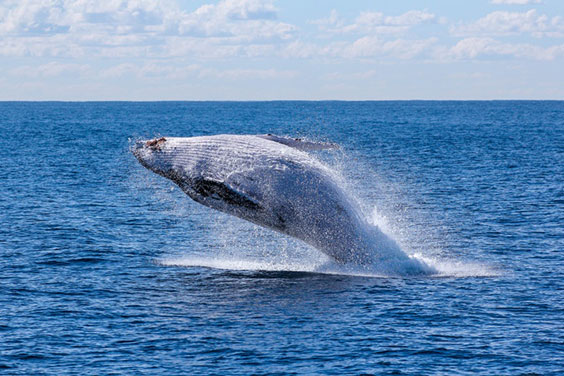How do you eat a whale? One bite at a time. How do you teach history? The same way. The history of us—North Dakotans, Americans, humans, the planet—is a really big story. We break it down, one bite at a time, into arbitrary regions and time periods to make it easier to process.
At places like the North Dakota Heritage Center & State Museum in Bismarck and our state historic sites, we try to have a comprehensive, encyclopedic approach to telling the story of North Dakota. If something has happened within the borders of the state to the people who have lived here (even for the briefest time), we try to capture that story when we can. We break the “big picture” story down into lots of little stories and themes. We try our best to identify these stories, preserve them, interpret them, and promote them. This means we also have to make some very hard decisions. We have committees that decide everything from what objects we collect to what history books get sold in the store. There are a lot of people who help decide which stories are highlighted on any given day at the State Museum.

Grey Whale breaches the ocean.
My job as an outreach coordinator with the North Dakota Studies project is to help educators break this whale of a story down into bite-size pieces for their students. Rather than having educators try to teach all of North Dakota history in just a few weeks, we help teachers and their students to think like historians, so they find the bite-size stories that they are interested in and learn to think critically about how that story is interpreted.
Instead of having students memorize an encyclopedia’s worth of names, places, and dates, museum educators would rather students learn more about how historians think. How do we develop good questions to ask of the past? How do we find and analyze sources to know whether they are accurate? Does the evidence support our hypothesis? The key to making all of this relevant and interesting to students is the questions we ask. We want to ask questions of history that lead to investigation and analysis.
We want students to become history detectives. Instead of simply telling students what type of shelter people of the past used, we want them to think about what type of resources would have been available in a particular location. When we look at illustrations of tipis, earthlodges, forts, and sod cabins, we want them to think about why someone might be living in that particular style of housing. Why would someone build a fort? Why would a tipi be useful? Solving these puzzles is more interesting and engaging than simply memorizing textbook information. The single most useful question my colleagues and I ask of the content we work with is “How do we know?” Try using this question the next time you are visiting an exhibit or reading a book, and see if it leads to some detective work of your own.

Solving history's mysteries: How do we know what we know?

